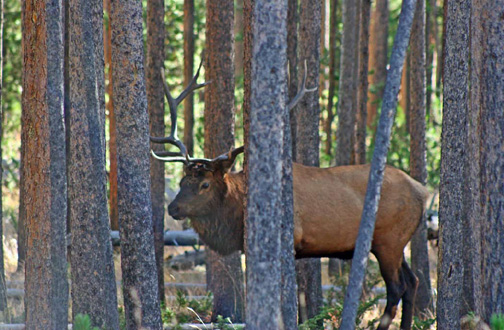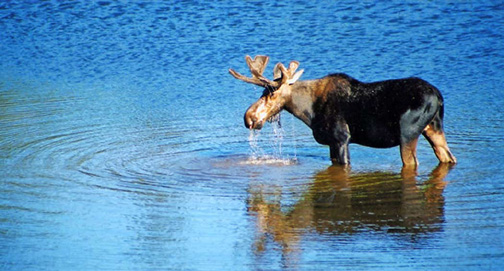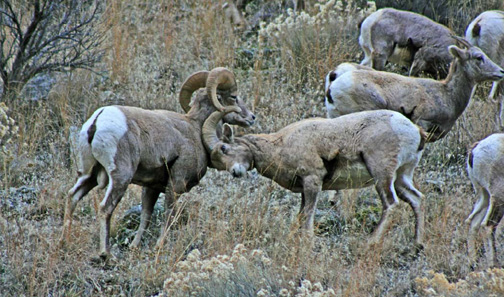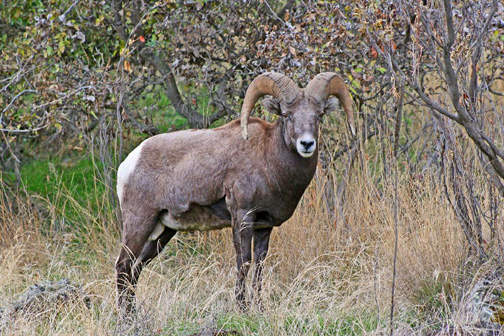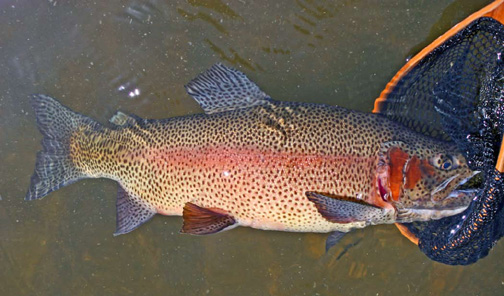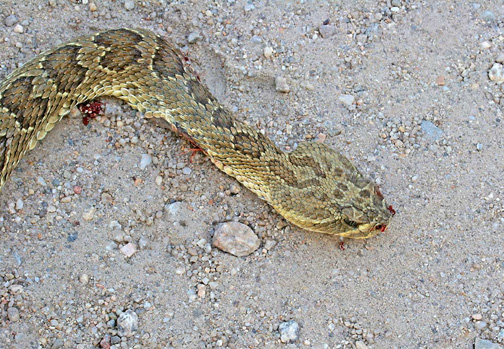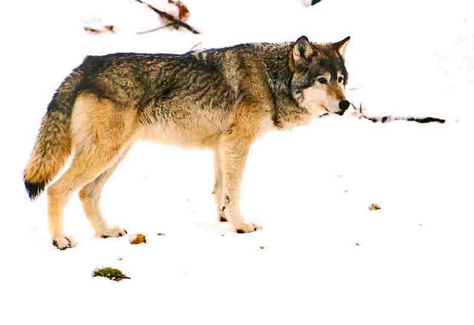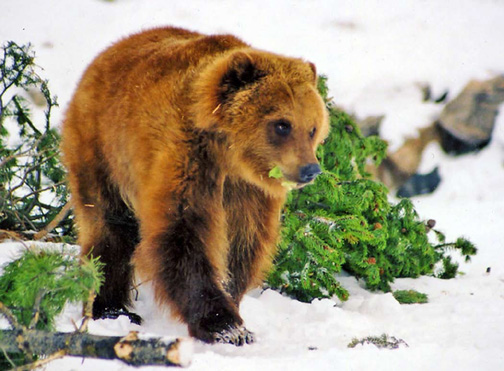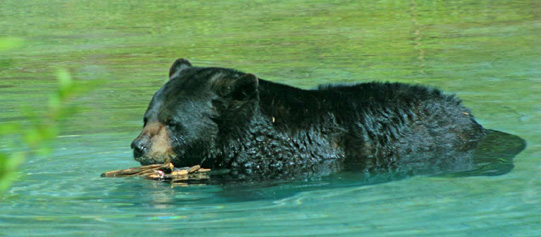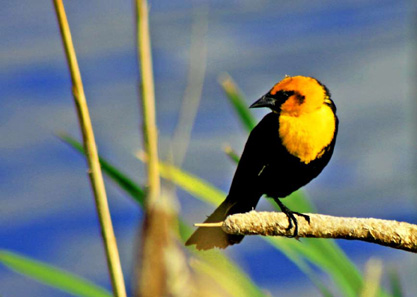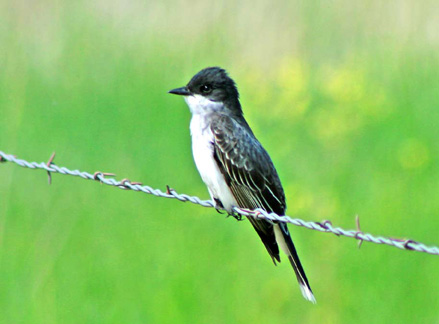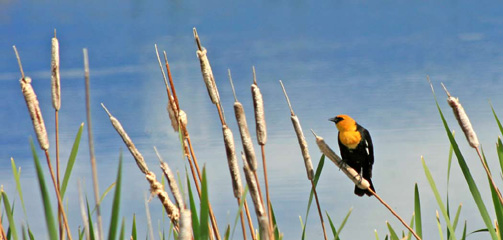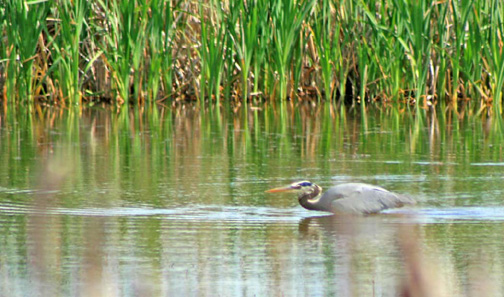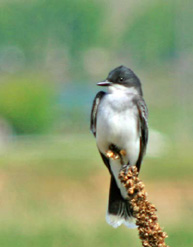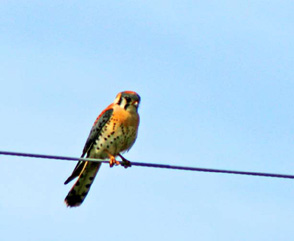Wildlife Photography
Many times wildlife photography is an unexpected event. After a curve in the trail or road, I’ve come in contact with an unexpected animal. You must be levelheaded and fast on the draw to capture this encounter. It’s called wildlife because they are unlikely to stick around for a picture. Know your camera and accessories well and become proficient with their operation. This is not the time to thumb through the operator’s manual.
If my subject is going to hang around, I’ll set up my tripod. If it looks like the subject will flee, I’ll go hand-held. A steady tripod dramatically improves the image. I’ve used a mono pod on occasion because it’s faster than the tripod but not as steady. The mono pod is an improvement over hand-held. It’s also a handy way to carry your camera for it balances well in your hand.
You must be fast at turning the camera on and removing the lens cap. For wildlife I use my 75-300mm zoom lens. I’ve preset it in the landscape setting of the Image Zone. With this preset my depth of field will be greater than the portrait mode. I like to have everything in focus. But if the subject is in an unattractive background, I’ll switch to the portrait setting since this may blur the background.
All of the auto-focus (AF) points are active in the Image Zone. Generally the AF point covering the closest object in the frame will be activated. Use care in composing the image so your subject is in the active AF point. If you have focused on a foreground bush your wild animal may not be in focus. Press the shutter and capture the subject. I will take multiple shots since many times the subject will unexpectedly move. This way I’m ensured of a good photo.
Now if the animal is not afraid and is sticking around, I switch to the Creative Zone setting of Aperture Priority (AV). In this mode the f stop is preset to f20 which will give me a great depth of field in focus. My other preset in this AV mode is that the mirror lock-up is enabled. The remote release is also plugged in. Now I compose the frame and press the remote twice. The first one locks the mirror up and the second one takes the image. This of course is done when the camera is firmly supported in the tripod. This ensures me of a photo that is in crisp focus. After several shots, I stop peering through the view finder and start looking at my subject in an upright position with my thumb on the remote release. Sometimes I’ll talk softly to the subject or whistle or grunt. This draws the subject’s attention and it may look at me which improves the image’s composition.
In this Creative Zone I can pre-select the AF point that I want to use. This way I’m ensured that the subject is in focus. I don’t worry about this unless there are objects in the foreground that may be focused upon by the auto-focus mechanism. Camera placement and zoom adjustment can crop out these unwanted objects. If I cannot do this, I place the active AF point on the subject. But all of this requires time that you might not have. Usually my first few images will be taken in the landscape setting of the Image Zone and then if the animal is still around, my next images are in the AV mode. But if the subject is still there I will preset an AF point that’s directly on the subject. I take multiple images in each setting; that way I’m ensured that some of them will be better than the rest. Wildlife photography requires a level head and an intimate familiarity with your equipment. Speed and precision help make the shot.
Some of my wildlife photo shoots have subjected me to potential harm. Know when and how to safely exit. Watch the animal’s ears. If they suddenly go backwards that’s the initial sign of aggression. Give the animal his right-of-way. Never crowd or block him off from his escape route. Your exit is best done by slowly backing away with your head noticeably lowered. Don’t make direct eye contact. This body language quickly tells the animal that you are neither a threat nor a prey animal. If you run, you may mimic a prey animal and elicit an attack.
Next let me share with you some of my recent wildlife photos. Some are of dangerous animals such as grizzly bears, a huge black bear, wolves, a rattlesnake, and an enraged bugling bull elk. The rest are of a more docile nature. All of these images were captured on public lands. The chances of encountering wildlife can be good but taking a great photo is much harder than expected.
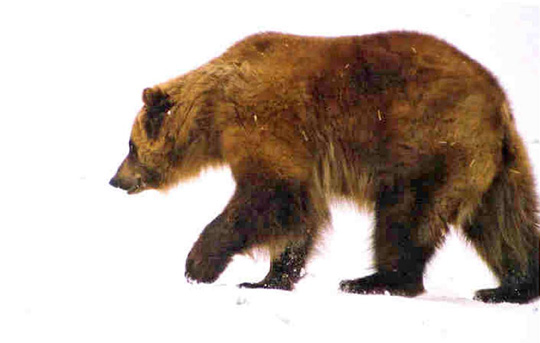
This grizzly bear was out of hibernation in January and wandering the snow banks of Montana’s Madison River. It looks like he has been sleeping in a hay stack. I’m not in crisp focus because my fingers were trembling as I quickly hand-held the shot.
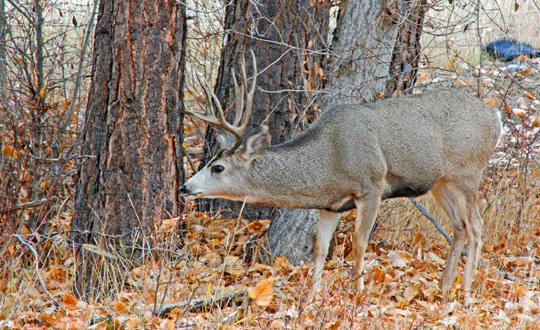
The above mule deer buck was photographed during the hunting season. He was hiding out in a thicket of tree.s He froze in position which gave me time to set up the tripod and use the AV mode and mirror lock-up to capture a sharply focused image.
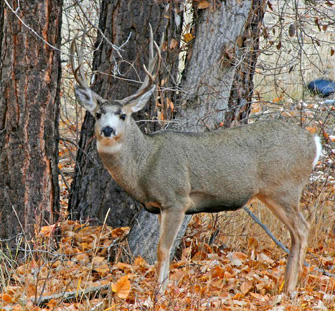
Same deer after I grunted to get his attention.
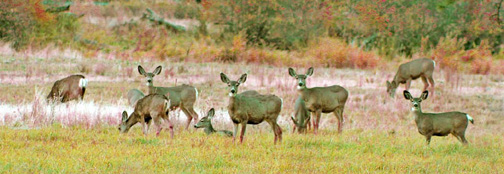
The above mule deer herds greeted me as I was fly fishing for steelhead.
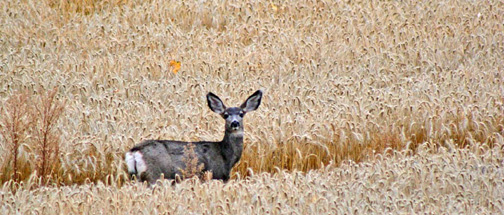
This mule deer doe has cut quite the trail into her favorite wheat field. I shot this image with the camera in a tripod and a 300mm lens setting in landscape mode.
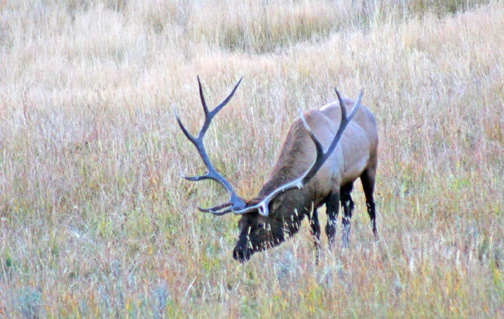
Bull elk are difficult to approach in areas that they are hunted. A stealthy approach is mandated. The top photo was taken at dusk using a tripod and the bottom one was taken just after sunrise with a hand-held camera. A 300mm lens was used for both.
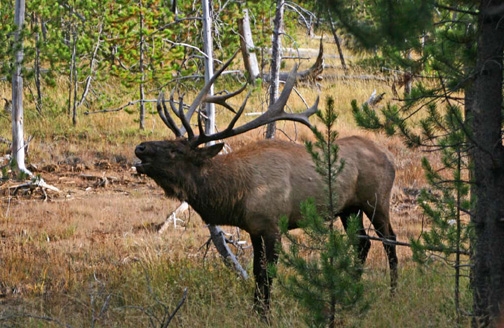
I had to make a hasty retreat on both of these shots. I called the elk in by bugling a diaphragm call into a grunt tube. The photo was taken as the elk returned a deep bugle and my movement caused him to false charge. I snuck up to the moose while his head was under water feeding on some aquatic plants. I failed to notice that his ears went back as I was approaching. He felt threatened by my presence and I tried to climb a tree. Both images were hand-held with a 75mm lens.
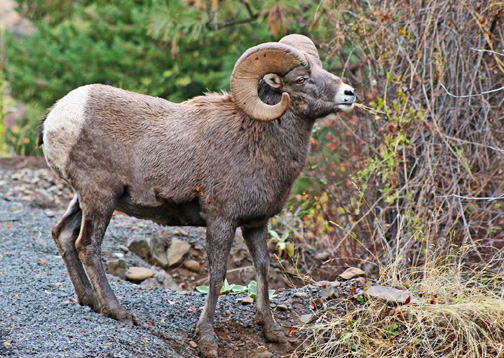
I love to photo big horn sheep because they show no fear and give you plenty of opportunities. These two shots were captured with a 75mm lens. I was able to use the tripod on each one. The rams below were sparring over the females.
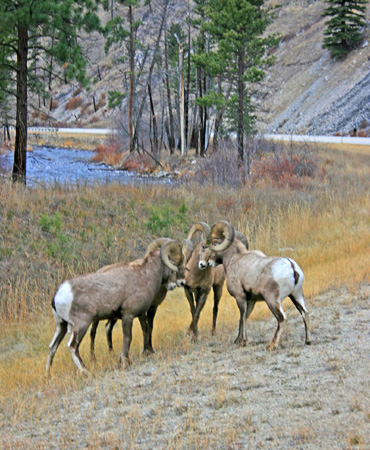
These four rams are busy banging their heads together. I used my 55mm lens and my tripod.
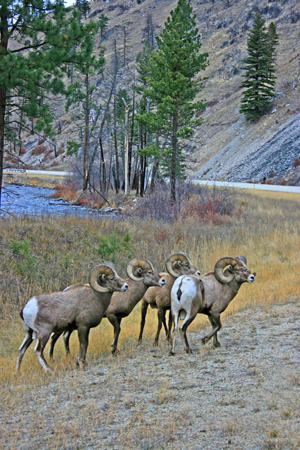
I like this composition with all four horns lined up for comparison. My camera was in the tripod and I was standing erect, looking with both eyes at the animals. A well framed image already is set-up and I’m left with the release in my hand watching for the right moment.
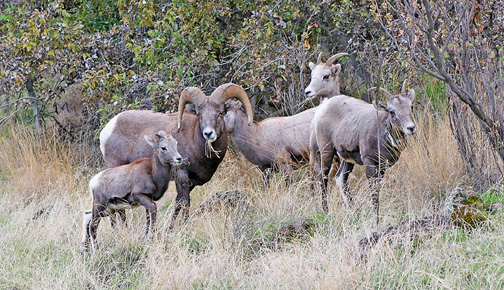
Again I used the tripod with the release in my hand. The composition is already framed and I’m watching with both eyes wide open for the moment when they all have a bunch of grass in their mouths and are looking at me. It’s a family portrait at the diner. Below I repeated the same process and waited for the ram to stare at me.
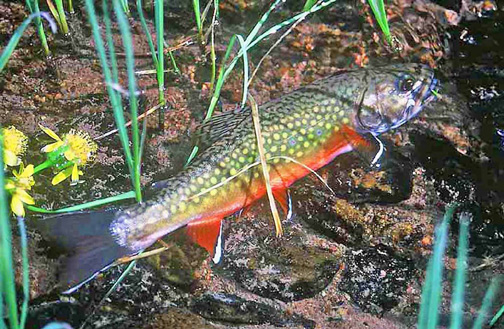
Fish are photographed best when they are alive and in their element I use a polarized filter on my wide angle lens It’s difficult to use a tripod because the fish seem to constantly flop around and change their positions A hand-held camera with an f stop of f20 helps me capture a crisp focus that shows off the trout’s delicate colorations.
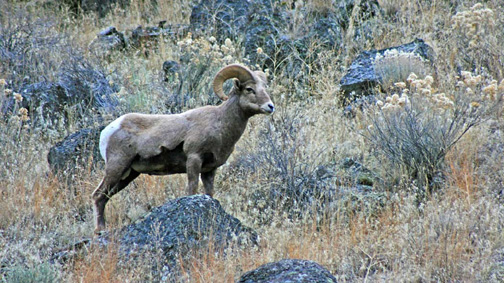
Big horn sheep frequent rattlesnake country. This ram seems to be focused on my presence. I used the tripod, AV mode, Mirror lock-up, and my shutter release to capture his image. Below is a sinister rattler that tried to bite me as I was photographing the ram I used a hand-held camera on the snake with a wide angle lens.
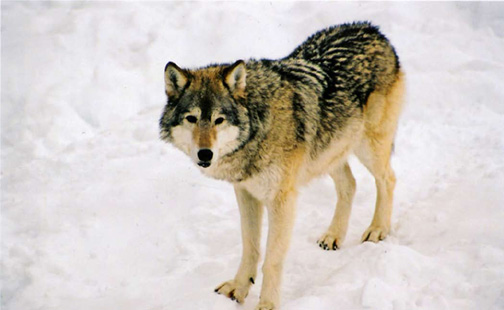
After noticing a wintering deer herd unusually packed together, I four-wheeled up towards the area the deer were watching. I took these photos of a wolf pack from the window of my truck. I hand-held the camera with a 75-300 zoom lens in landscape mode of the Image Zone setting. These photos were taken in Montana’s Madison River Valley.
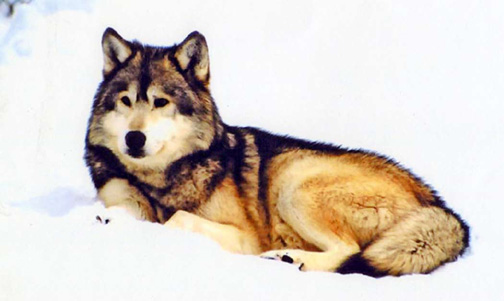
After squeaking like a mouse, this wolf looked in my direction. Later that same day, I drove right up on this grizzly bear going through the holiday garbage at a recreational cabin.
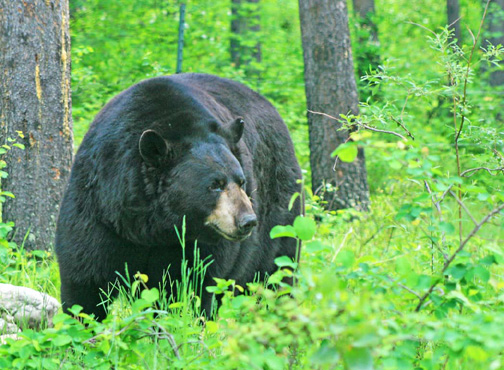
This is a huge Glacier Park black bear that was not too far from Polebridge, Montana. I rolled down my truck’s window and captured this shot hand-held with a 75-300 zoom lens set in landscape mode. Nearby another black bear is taking a cool dip in a beaver pond. What a place for bears.
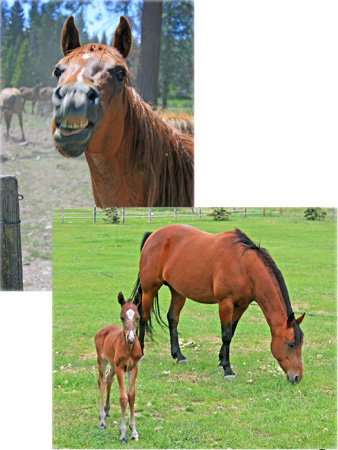
I enjoy taking pictures of comical horses and foals. The horse is long in the tooth and in need of a scaling but his gums appear to be a healthy pink. - The newborn foal is thin and wobbly Both photos were hand-held, wide angle lens shots. Time is of essence when a pony gives you the horse-laugh.
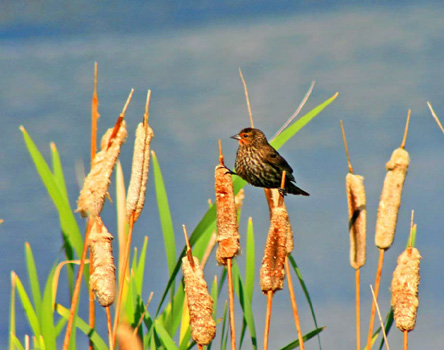
Birds make attractive subjects, but they don’t want to pose. It’s easiest to use the tripod and 75-300 zoom lens from a safe distance afar to keep from spooking them. The AV mode, mirror lock-up, and remote shutter release greatly improve the image.
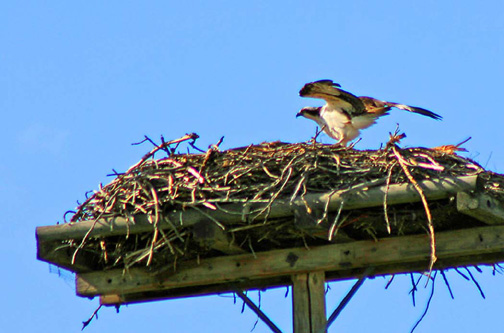
The above osprey photo was taken using the tripod and all of the precise camera settings, but the small bird on the fence wire was captured hand-held from the open car window. When you are driving in the country, have ready access to your camera.
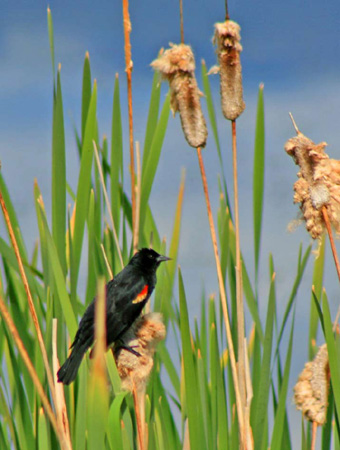
These images were taken from the car window with the camera ready for action. All we had to do was to stop with the window rolled down. I like their pastel colors and alert forms.







